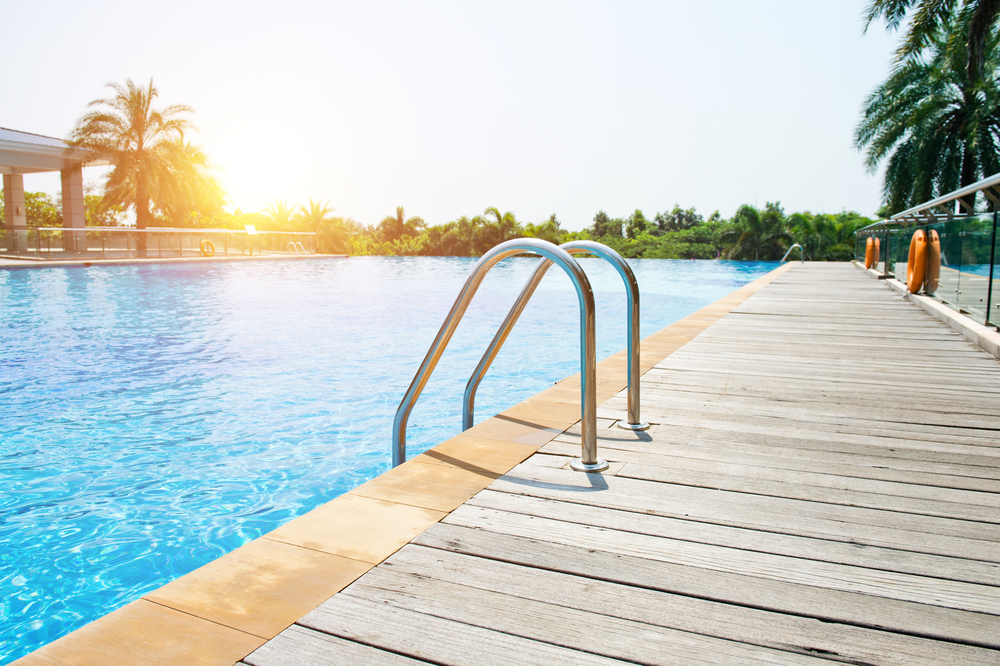The primary purpose of swimming pools is to provide a fun way to cool off on a hot day or to spend time with family during the warmer months. Whether you need a pool for exercise or to host friends and family during summer, a swimming pool will be the focal point of your backyard. Plunge pools, ideal for small backyards and apartments, offer the same soothing effect as larger, more extravagant lap pools.
When incorporated into the home’s structure or linked to an outdoor living space, a swimming pool can be a focal point for the home’s aesthetic, which will also boost your property’s value. As swimming pools are costly investments, they necessitate careful planning and consideration before installation.
So before you hire a swimming pool contractor, below are some valuable tips for choosing a swimming pool design.
Inground vs. Above Ground
There are a wide variety of pools to choose from for installation on your property, but the two most common design options are inground and above-ground swimming pools.
Above Ground Swimming Pools
Above-ground pools are the most straightforward and affordable pool option. They often come as kits that are easy to assemble. They are also easy to disassemble and relocate to new locations for added convenience. However, this type of pool has a shorter lifespan and is generally less aesthetic than others.
Inground Pools
Although inground swimming pools are the most common, they are more expensive than their above-ground counterparts. Vinyl liner inground pools are budget-friendly options but come in limited designs. The advantage of inground pools is that they are out of view, and very convenient to simply jump into.
Pool Materials
If you pick an inground pool design, you’ll need to consider the construction materials. Your pool material options include concrete, vinyl, or fiberglass.
Concrete
These pools may be the most expensive option but are also the most structurally stable and long-lasting. Since concrete is moldable into any desired form, you can design a pool that perfectly suits your needs. It usually takes between three and four months to build a concrete pool.
Fiberglass
Fiberglass inground pools are among the most cost-effective options available. A factory-formed casing gets dropped into the prepared space following excavation. If you choose this material, measure your yard to ensure the large equipment will fit. The gel-coat finish of a fiberglass pool is non-porous and durable, making it easy to maintain. You can install a fiberglass pool in three days.
Vinyl
Vinyl pools are rapidly gaining in popularity. A flexible, one-piece liner is fitted into the excavated hole and then secured to an aluminum or steel framework to complete the pool construction. The pool can be ready in about one to three weeks. One con about vinyl pools is the limited size and design options.
Pool Design
When installing a new pool, you’re looking to improve the look and functionality of your outdoor space. Consider the following factors before choosing a pool design and shape:
- Space: Evaluate the size and layout of your yard.
- Budget: How much are you planning to spend?
- Users: Who will be using the swimming pool?
- Features: What features do you need in your home pool?
- Landscaping: Look at your yard’s layout and landscaping.
A long and narrow pool is ideal if you need a pool for solo laps. Consider having a shallow section if you have kids. Water features like fountains, waterfalls, and ponds are available as cool accessories for your home pool. If the pool will be used by people with limited mobility, get accessories like ladders, handrails, or steps. Your pool’s design complements the rest of your backyard’s landscaping. If you’re starting with a blank slate and a swimming pool, you can shape the rest of your backyard around your pool. Keep in mind that the pool area shouldn’t consume all of the available space as you make plans. Leave ample space for a pool deck, seating area, or grill.

